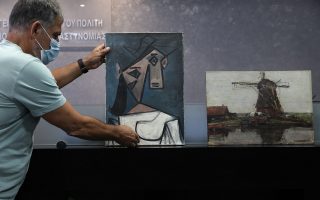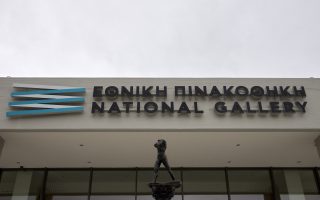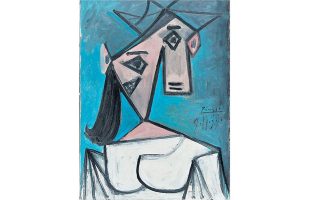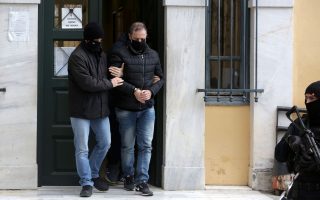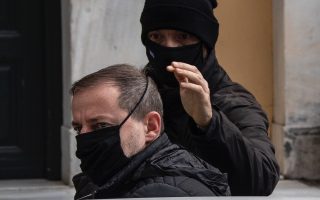The mystery of the Moncalvo
Work stolen from National Gallery resembles sketch that came up for auction in Italy
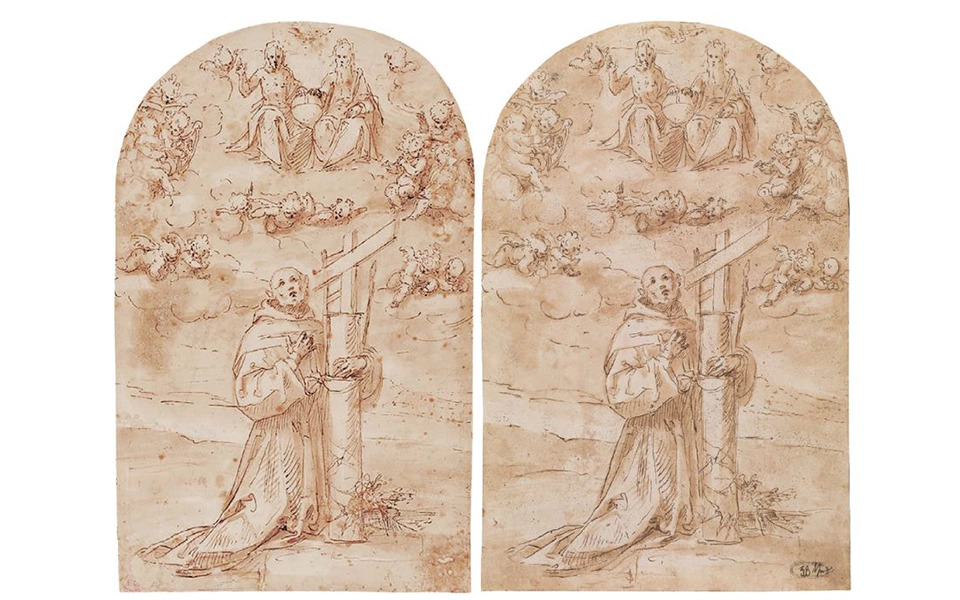
Stolen paintings by Pablo Picasso and Piet Mondrian were recovered this week, following a police search that lasted nine years after they were removed from the National Gallery in Athens. However, another work of art swiped at the same time, a pen and sepia wash drawing by the 16th-century Italian artist Guglielmo Caccia, was not found.
The 49-year-old man arrested for the 2012 heist claims that he destroyed it. During the preliminary inquiry he testified that he wiped his bloody hand with it while trying to escape from the gallery, hurriedly put it in his pocket and later threw it in a toilet to get rid if it. He also claimed that he never tried to sell his loot. In September 2019, however, an almost identical sketch appeared in the online catalogue of the Pandolfini auction house in Florence, raising reasonable questions about the mystery of the stolen Moncalvo, as Caccia is better known.
Italian art historian Serena D’Italia was the first to spot Moncalvo’s work “St Diego de Alcala in Ecstasy with the Holy Trinity and the Symbols of Passion,” at the Pandolfini auction and compared it to what had been stolen from the National Gallery.
“The sketch has been somewhat ‘corrected,’ a poor-quality signature and stamp has been added, but many details, dark spots for example, are so similar that I am almost certain it is the same work,” the Italian expert told Kathimerini in an article published on November 26, 2020.
The work was to be auctioned off in October 2019, as lot number 96, without provenance and with the information that “it may be related to the production of drawings by the painter Guglielmo Caccia, known as Moncalvo (1568-1625).” The Italian expert informed Marilena Kasimati, a Greek art historian and curator of the National Gallery from 1984 to 2017, about her finding.
Kasimati confirmed to Kathimerini in 2020 that she was informed by her colleague and then the Ministry of Cultural Heritage in Turin that Moncalvo’s stolen sketch appeared on Pandolfini’s auction list on October 1, 2019.
“I’m almost certain that the work at the auction is the same as the one at the National Gallery, which, after the theft, underwent forgery, possibly even washing, to eliminate damage to the paper surface and for the purpose of creating confusion,” Kasimati also told Kathimerini in 2020.
She noticed that at the bottom of the sketch, a fictitious “3B” had been added, as well as a supposed signature in black ink. She said then that she believed the forgery had been done with the help of a paper conservator, possibly Greek, after the theft.
Kasimati informed the leadership of the Ministry of Culture, telling them she was willing to travel to Italy herself to inspect the work.
However, the ministry told Kathimerini that it contacted Europe and Interpol and decided that it was not the same work as the stolen one, so no procedure was initiated to recover it.
The National Gallery, which was responsible for verifying its authenticity, decided that it was not necessary at that time to send an expert to examine the work closely, because of “serious doubts” about its authenticity due to a small difference in size and some spots, as the director of the National Gallery, Marina Lambraki-Plaka, told the paper in November 2020. She said the issue was then raised with the gallery’s board, which agreed.
Digital analysis
After discussing the issue with lawyer and collector Stelios Garipis, art conservator Kalypso Kampani decided in March 2021 to conduct her own study. She digitally analyzed two images of the sketches, in collaboration with Dr Eric Postma, a professor of artificial intelligence at Tilburg University in the Netherlands, and found that they were almost identical. “The tiny differences between the two photos lies in the fact that they have been taken from a different height and angle and in different lighting,” says Kampani.
Postma, who specializes in detecting art forgeries through digital analysis, came to a similar conclusion. “The two images are to a large extent identical,” he told Kathimerini by telephone, adding that more detailed further research and the use of high-resolution photographs would be useful for complete identification.
The sketch was withdrawn from the online auction in 2019, but Pandolfini did not respond to Kathimerini’s written questions about the work’s fate since then.
